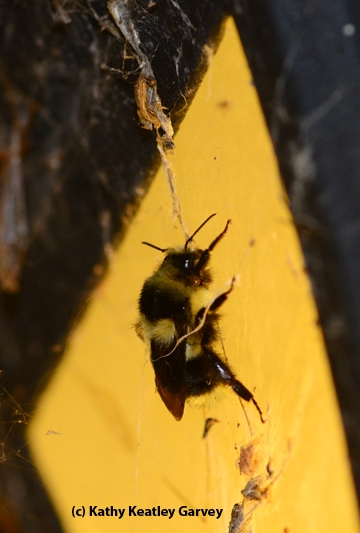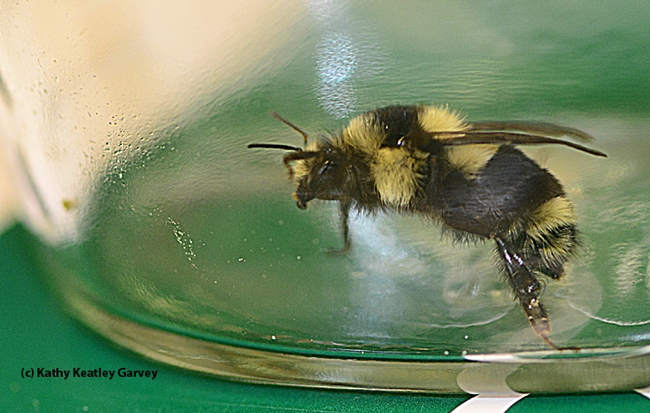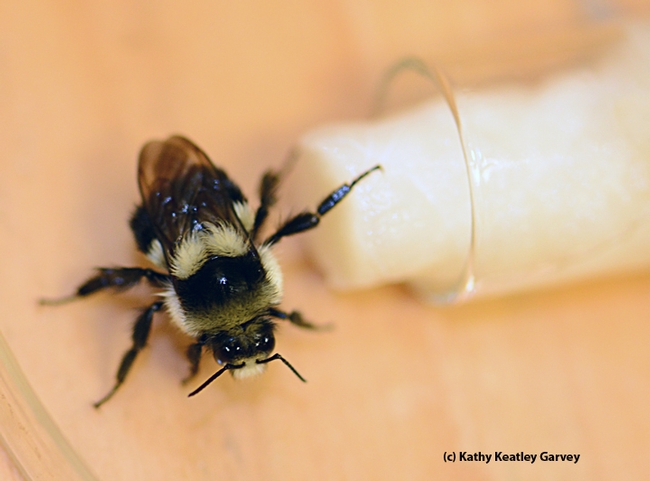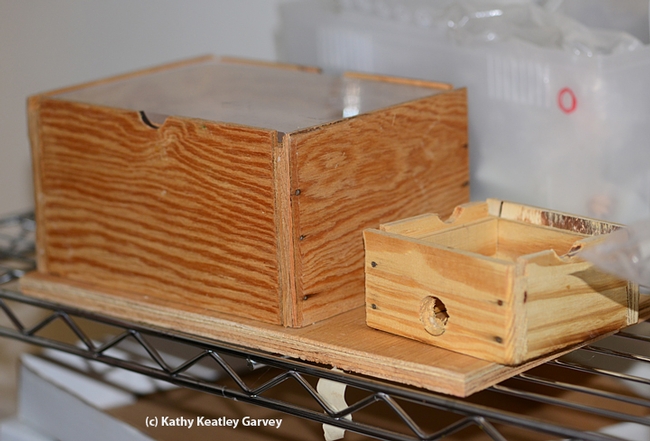
Or to put it more precisely, three Bombus melanopygus queens.
Early this morning, in between dark and dawn, three black-tailed bumble bees buzzed around our porch lights. Now, bumble bees don't venture out at night and they certainly don't head for porch lights--they head for flowers in the daytime--so immediately we're hypothesizing an infestation by the parasitoid phorid fly, Apocephalus borealis, aka "zombie fly."
We had earlier heard Professor John Hafernik of San Francisco State University discuss this fly at an entomological meeting in Sacramento.
The female flies lay their eggs in bumble bees, wasps and honey bees. Certainly not a nice thing to do. Eventually the eggs hatch into larvae and emerge from the dead host.
It was Hafernik who discovered that the "zombie fly" infests honey bees. He and his colleagues published their work, "A New Threat to Honey Bees, the Parasitic Phorid Fly, Apocephalus borealis," in PLOS One in January 2012. They revealed that the parasitized, disoriented honey bees leave their hives at night and head for the lights.
"After being parasitized by the fly, the bees abandon their hives in what is literally a flight of the living dead to congregate near lights," said Andrew Core of the Hafernik lab. 'When we observed the bees for some time—the ones that were alive—we found that they walked around in circles, often with no sense of direction."
Zombies. Or "ZomBees."
Hafernik and crew sounded the alert. They launched a citizen science project called ZomBee Watch, sponsored by the San Francisco State University Department of Biology, the San Francisco State University Center for Computing for Life Sciences and the Natural History Museum of Los Angeles County.
Fast forward to today...and the three bumble bees buzzing around our porch lights. That erratic, uncharacteristic, porch-light behavior prompted us to take them to native pollinator specialist/bumble bee expert Robbin Thorp, emeritus professor of entomology at UC Davis. Thorp is a co-author of the pending Bumble Bees of North America: An identification Guide (Princeton University Press).
It was he who identified them as Bombus melanopygus queens.
Thorp placed them in his "comfy" bumble bee-rearing chamber/observation box in the Harry H. Laidlaw Jr. Honey Bee Research Facility, provided nourishment (which the ladies accepted gracefully) and now it's wait-and-see.
Phorid flies? Nematodes? Something else? Nothing?
Don't know. However, as of 5 p.m. today, all three are alive.
"Just checked your three fuzzy ladies," Thorp reported. "They are still active and doing well."
In addition to carbohydrates, Thorp gave them a protein patty made by staff research associate/beekeeper Billy Synk, manager of the Laidlaw facility.
"I'll put in a pollen lump or two tomorrow," Thorp said, "to see if any are interested in becoming broody and starting a nest."
Attached Images:


